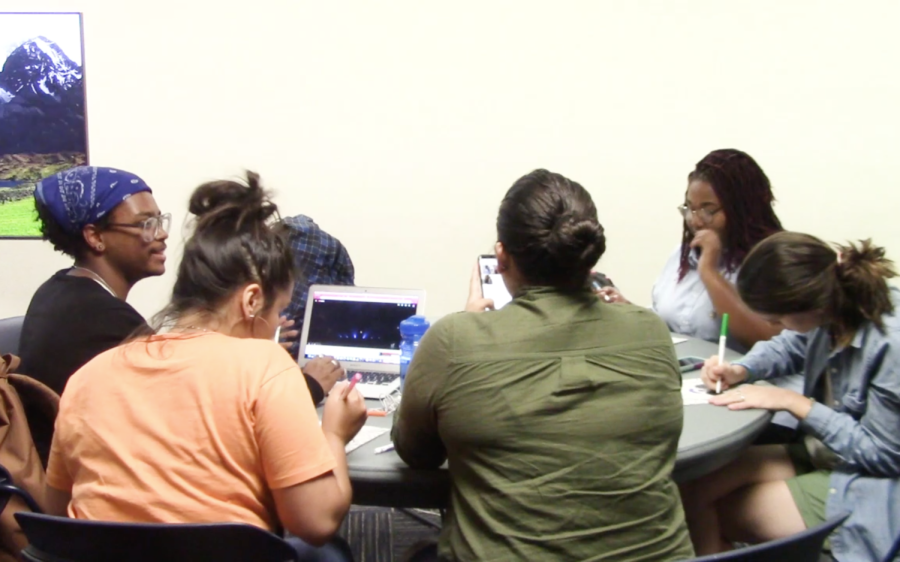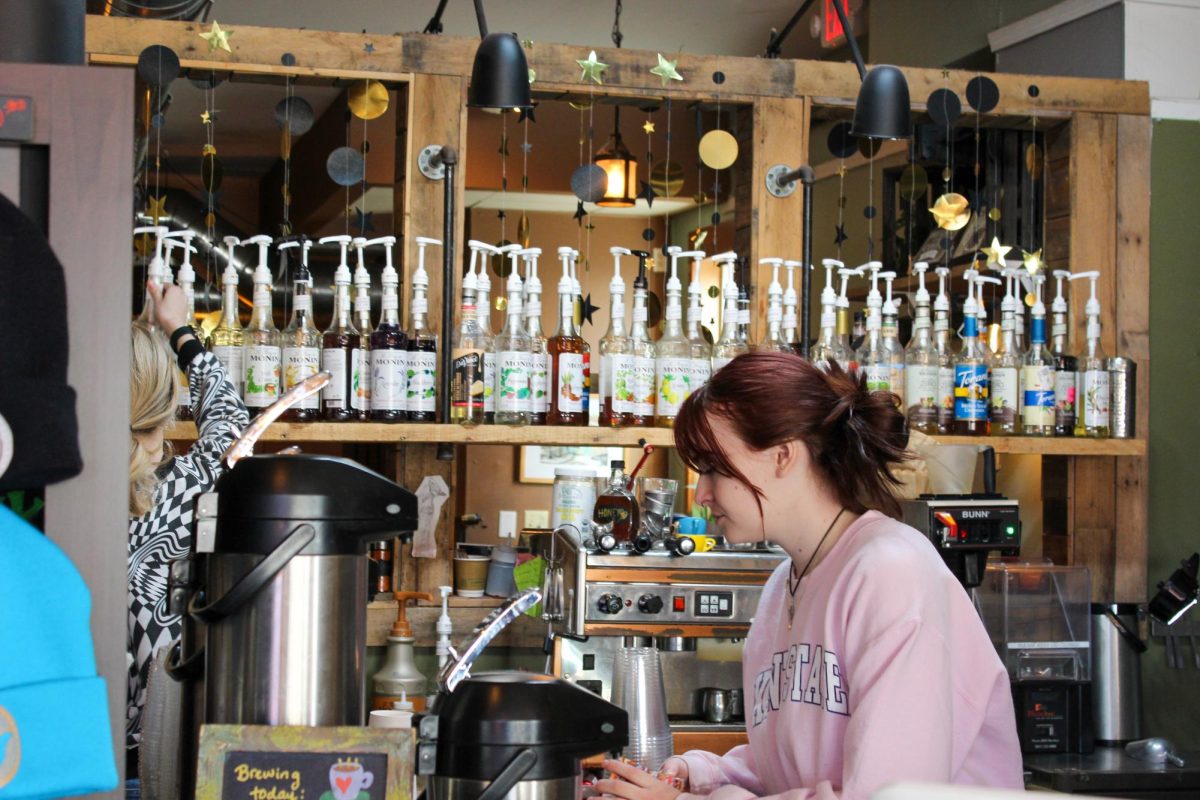The difference between Spanish, Hispanic and Latinx
October 16, 2018
Hispanic. Spanish. Latinx.
These terms are often assumed to mean
the same thing; however, there are many differences that set them apart.
Latinx is the gender-neutral term for Latino or Latina. It is meant to be more modern and inclusive. It applies to anyone whose origin or ancestry is in Latin America or the Caribbean. This term excludes people from Spain and includes those from Brazil, just as the terms Latino or Latina do.
Merriam-Webster added Latinx to its dictionary in September 2018.
“In Spanish, you will use specific letters to do feminine and masculine, so instead of doing that, in order to make the inclusive language known, you will use the ‘x’,” said Marlon Valladares, a junior physics major.
Valladares is a first-generation Salvadorian who identifies as Latino,
Hispanic and Latinx. He identifies as Latinx because he considers himself an ally to
the LGBTQ community.
Geographic location and language are the biggest differences between this term and Hispanic or Spanish.
Hispanic refers to those of Spanish-speaking descent. This includes Latin America and Spain; however, it excludes Brazil, whose national language is Portuguese. Many of these countries speak Spanish because they were colonized by Spain.
According to the U.S. Census Bureau, the Hispanic population in the U.S. as of July 1, 2017, was 58.9 million. This number made Hispanics the nation’s largest ethnic or racial minority. The U.S. Census Bureau expects this number to reach 119 million by 2060.
Spanish refers to people who come
from Spain. While Spanish also refers
to the language, just because someone
speaks Spanish does not mean they
originate from Spain.
According to a Pew Research Center
analysis of the Census Bureau’s American Community Survey, there were an estimated 746,000 Hispanics of Spanish origin living in
the U.S. in 2013.
Even with these distinct differences, Hispanic, Spanish and Latinx are often assumed to mean the same thing. This assumption ignores the uniqueness of each culture, said Aylin Chagolla, a junior speech pathology and audiology major and the president of Spanish and Latino Student Assocation (SALSA). Chagolla’s parents
are from Mexico, and she identifies as
Hispanic and Latinx.
“There are a lot of unique aspects of every culture and every country, and just knowing that you can’t just put us in a small box and think that’s OK,” Chagolla said.
It is easy for people to associate these cultural identities with someone’s entire personality, said Katia Milagros Nieto Salizar,
a first-year graduate student of communication studies and the president of the Order of the Global Flashes. She is from Peru and identifies as Hispanic and Latina, but does not want the terms to completely define who she is.
“I identify myself by definition, but I don’t think I have strong membership feeling,” Salizar said. “I love my country, and I love my culture, but sometimes being a part of
a specific group kind of closes the opportunity
to meet new people. I am part of many
different groups.”
While there are many differences and similarities between these cultures, it is important to also recognize the uniqueness
of each individual.
“I think being understanding of each person individually and not grouping us all together, even though we do identify as being Latino or Hispanic, [is important],” said Katia Rodriguez, a sophomore public relations major and the event coordinator of SALSA.
Society has a tendency to generalize members of these cultures to reflect the culture as a whole. Chagolla said she has felt this generalization and the pressure to represent her culture in a positive way.
“Growing up, I could have been maybe 7, I had known already that I had to
be careful about how I sounded, what I was saying, what I was wearing [and] how I was acting just because I don’t want someone
to take me and explode it in saying, ‘All Hispanics, all Latin Americans are like this,’” Chagolla said.
She said people should avoid making assumptions about someone’s identity or culture.
“I’d prefer you ask me 1,001 questions than assume what I am or tell me what I am and am not,” she said.
Stereotypes are something that often come with these assumptions about Hispanic, Spanish and Latinx cultures.
“We have stereotypes,” Salizar said. “We have labels that are related to the place we were born and our background, but we are people at the end of the day. It’s not good to judge someone when you don’t know someone.”
Hollywood often contributes to the negative stereotypes of Latinx, Hispanic and Spanish cultures. Many TV shows and movies negatively portray characters of these cultures as criminals or gang members.
According to a research report published by the Opportunity Agenda, 50 percent of Latino immigrant characters were portrayed committing a crime.
“All the Latino characters are robbers and drug dealers, but we are not,” Salizar said. “We are also lawyers. We are also policemen and women. We are everything you can imagine. We have bad people, and we have good people.”
The female characters in these productions are often portrayed as oversexualized,
loud women.
Rodriguez said she has personally felt this stereotype and has seen it in her Latinx and Hispanic communities.
“We’re not all exotic, and we’re not this
sexual thing,” Rodriguez said. “Especially
for females in the Hispanic and Latinx community, I think that we’re more than just that. We’re intelligent women.”
Society and the media also tend to stereotype Latin American and Hispanic countries as “unsafe,” Valladares said.
“Especially as a Latino and Hispanic, when you turn on the news, you listen to a lot of horrible stuff,” he said. “Definitely media sometimes makes the mistake to not cover the good stuff. So, everyone gets to these prejudgments that are definitely not true.”
While these negative stereotypes can
be damaging to members of Hispanic,
Spanish and Latinx communities, they may also sometimes be accurate or positive
for some members.
Salizar said as a Latina she is often stereotyped as a “good cook,” which she does not mind being considered. She also said she
is often stereotyped as being unpunctual because she is Latina, but it does not offend
her because she believes it is true.
Senior psychology and sociology major Nico Rushh has Puerto Rican and african- american heritage and identifies as AfroLatinx. Rushh, who is
the social media chair of SALSA, believes
some stereotypes portrayed on television
are personally accurate.
“Sometimes it is a stereotype, but sometimes those stereotypes are true for some people,” Rushh said. “Like, the “George Lopez” show, that’s very much like my family. We are very off the wall for no reason, but that’s relatable.”
The best way to learn more about the differences between these cultures is to actually talk to someone who identifies as Hispanic, Spanish or Latinx, Rushh said.
Open-mindedness and education are important ways to improve negative stereotypes and learn the differences between these cultures.
“Getting to know each other is probably the least we can do to getting to live in harmony,” Valladares said. “Instead of wishing they knew, I would like for them to be a little bit more open about discovering. Try to learn rather than judge.”
Robyn Berardi is the diversity reporter. Contact her at [email protected].















